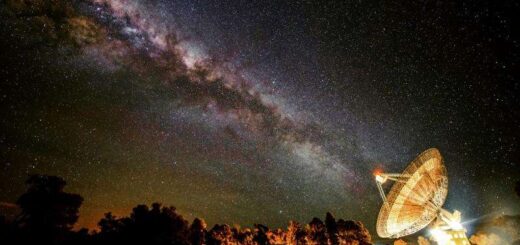What’s Way Cooler Than Naming a Kid? Naming a NASA Spacecraft

New Horizons, NASA’s name for its attention-grabbing Pluto probe, aptly evokes a sense of peering past the edge of the solar system.
Rosetta, the orbiter that analyzes comet 67P/Churyumov-Gerasimenko to uncover long-lost solar system history, brings to mind its namesake, the stone that once helped scholars decipher forgotten Egyptian hieroglyphs.
There’s no question that words like “Explorer” and “Voyager” have more power to stir the soul than the abbreviations, acronyms and portmanteau words used by, say, satellite companies. Maybe that’s why NASA’s current policy directive requires that “acronyms are to be avoided in selecting names except where the acronym is descriptive and easily pronounced.”
That document, however, remains a bit vague on the subject of name origins. Perhaps that’s because NASA’s names for its rockets, crewed spacecraft and instruments historically have come from all sorts of places.
In the case of space probes, names typically spring from one of three sources:
1. NASA in-house suggestions that bubble up in committee or along the development chain
2. Principal investigators on NASA-approved research projects (whose proposed names generally stick unless they conflict with existing or future missions)
3. The rare essay contest
From the beginning, NASA has sought emblematic names. Early NASA probes followed a simple naming convention known as the Cortright system, named for the future director of NASA’s Langley Research Center Edgar M. Cortright.
While serving in 1960 as the agency’s assistant director of lunar and planetary programs, Cortright hit upon the idea of tying related missions together using themes. Moon probes would bear names evoking land exploration, while craft dispatched to explore the planets and beyond would reflect their journey into distant places using nautical noms de voyage.
New Horizons spacecraft
When you’re dedicated to “helping us understand worlds at the edge of our solar system,” the name New Horizons kind of makes sense.
MARK GARLICK/SCIENCE PHOTO LIBRARY/CORBIS
Thus, while Surveyor and Lunar Prospector probes visited the moon, a series of Mariner probes studied Venus, Mars and Mercury, and two Viking landers touched down on Mars.
This tradition began to break up around 30 year ago. In 1989, NASA launched the Galileo orbiter and probe to explore Jupiter and its moons. Since then, the space agency and its global partners have dispatched Cassini-Huygens to explore Saturn and Titan, and posted Kepler to an Earth-trailing solar orbit to search for habitable planets outside our solar system.
Meanwhile, Mars’ Viking landers have given way to the Spirit, Opportunity and Curiosity rovers, all named via NASA-sponsored essay contests.
Thor, Atlas and Saturn Blast Off
Early in the space program, design teams proposed rocket names that were then nixed or ratified by the Department of Defense’s Advanced Research Projects Agency (ARPA). Before 1961, mission names were bounced around in the Ad Hoc Committee to Name Space Projects and Objects. Later, NASA developed a more formalized approval process, but the nomination system remained somewhat loose.
Some equipment arrived from outside NASA with a name already attached. Other times, nicknames bandied about during development became difficult to shake, or would have only caused unneeded confusion if changed.
Early rockets – Thor, Atlas and Saturn – bore mythical names that recalled their initial connections to military missile programs, which used names like Nike, Ajax and Hercules.
Other names, attached with hyphens, described various upper-stage configurations. For example, an Atlas rocket might have an Agena (Atlas-Agena) or Centaur (Atlas-Centaur) arrangement. This use of constellation names may have originated with manufacturer Lockheed, known for its Constellation aircraft and Polaris missile.
Sometimes names followed a reverse course. During its conversion from weapon to launch vehicle, a rocket used in Project Mercury — the program that first put Americans in space — was nicknamed “Ursa” and “Major.” It later gained the official moniker “Redstone” after the Huntsville, Alabama, Army base that developed it.
Multiple Monikers for Manned Spaceflight
In the early days of manned spaceflight, NASA labeled missions with a combination of a mythological or astrological name – first Mercury, then Gemini, then Apollo – and a series number, but they allowed their astronauts to name the actual spacecraft.
Actually, most missions had two names. Besides the mission name and number, they would have a second name made up of the launch vehicle — either a Redstone or an Atlas — and the crew module. For example, Alan B. Shepard Jr. became the first American to fly in space aboard Freedom 7, aka Mercury-Redstone 3.
The Apollo missions further complicated matters because their rockets carried two craft to space — the command and service module (CSM) and the lunar module (LM) — instead of one. Here, unlike with its space probes, NASA began resorting to abbreviations and numbers. To us, Apollo 11 launched atop a Saturn V rocket. It delivered Neil Armstrong and Edwin E. “Buzz” Aldrin Jr. to the lunar surface in the Eagle while Michael Collins orbited in the Columbia (not to be confused with the shuttle) overhead. By NASA’s bookkeeping, the LM-5 and CSM-107 were launched into space aboard AS-506.
Later, this system really came into its own when NASA turned to the reusable space shuttles, such as Discovery and Challenger. Each shuttle mission was designated by a number and the prefix STS, for “Space Transportation System.”
Just how the space agency will name future crewed missions is unknown. But it’s never too early to be thinking of a few good names.
The author would like to thank the NASA History Program Office for its help in this article’s preparation.



 Creators of mankind
Creators of mankind Description of “Tall white aliens”
Description of “Tall white aliens” Where they came from?
Where they came from? About hostile civilizations
About hostile civilizations The war for the Earth
The war for the Earth “Tall white aliens” about eternal life
“Tall white aliens” about eternal life Video: “Nordic aliens”
Video: “Nordic aliens” Aliens
Aliens Alien encounters
Alien encounters The aliens base
The aliens base UFO
UFO Technology UFO
Technology UFO Underground civilization
Underground civilization Ancient alien artifacts
Ancient alien artifacts Military and UFO
Military and UFO Mysteries and hypotheses
Mysteries and hypotheses Scientific facts
Scientific facts


















